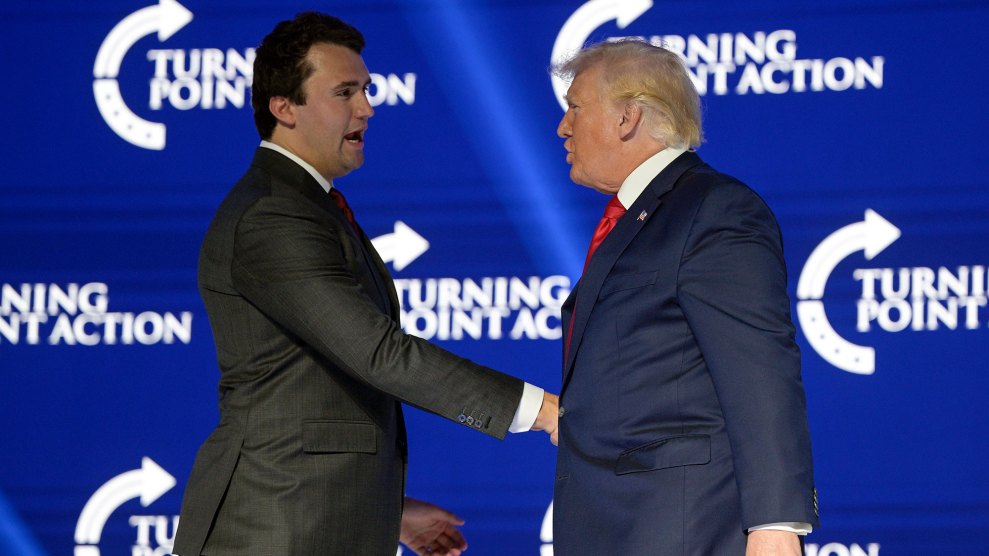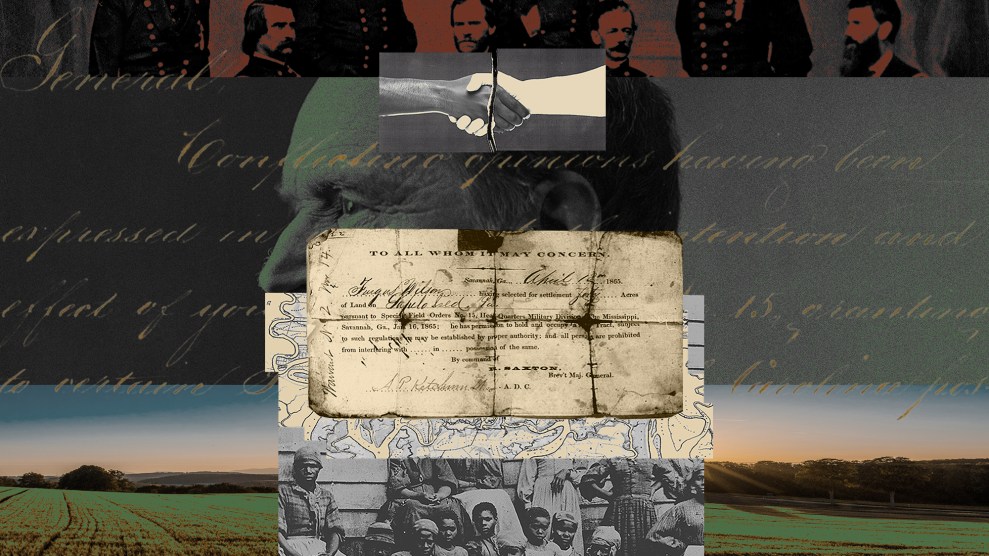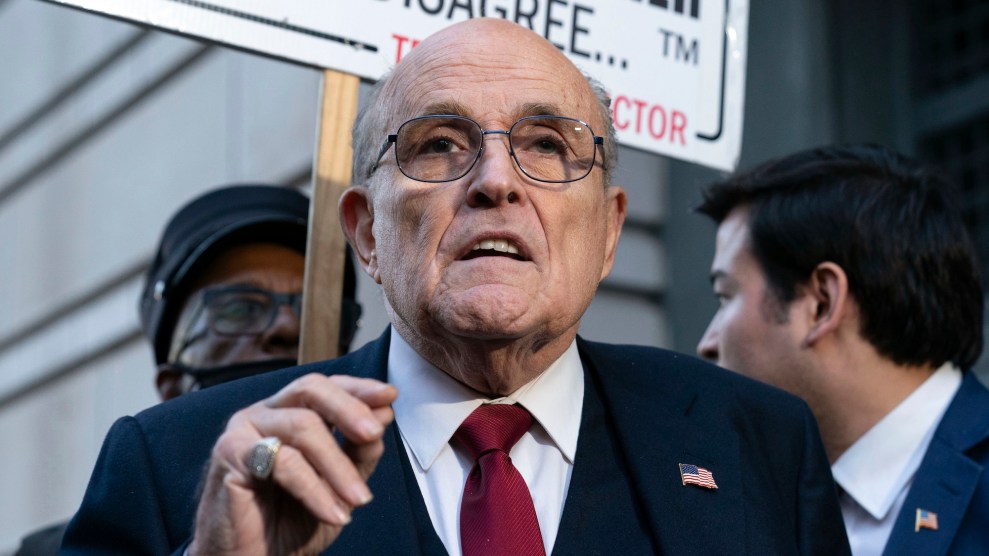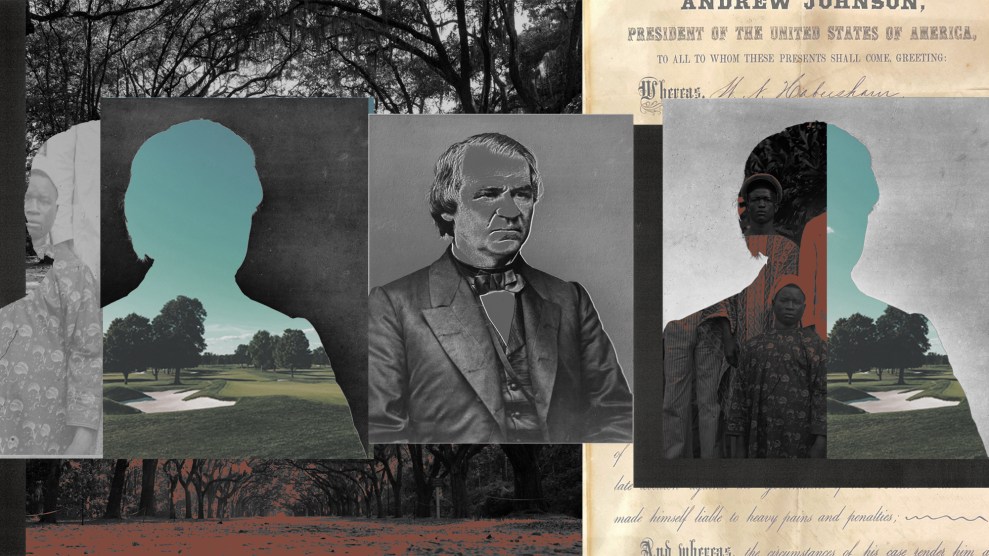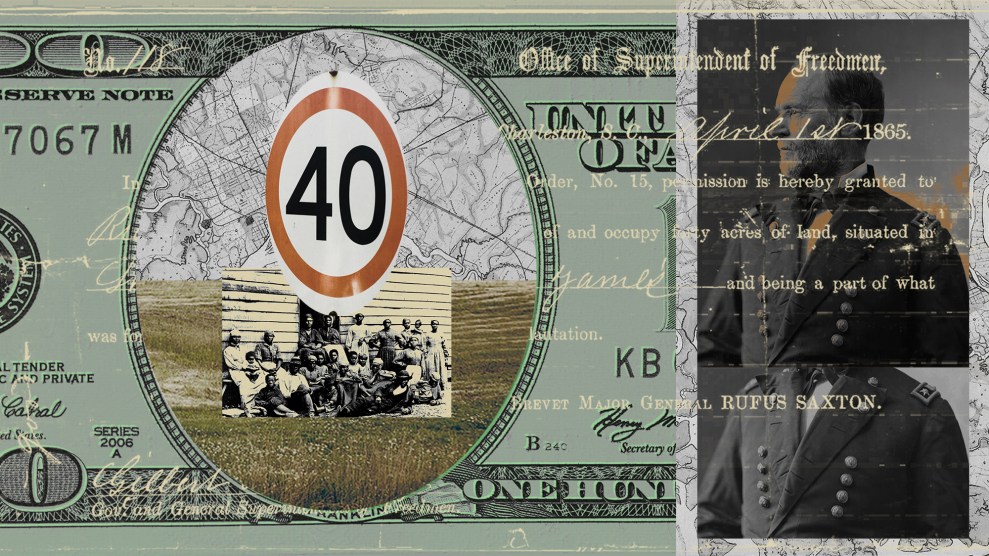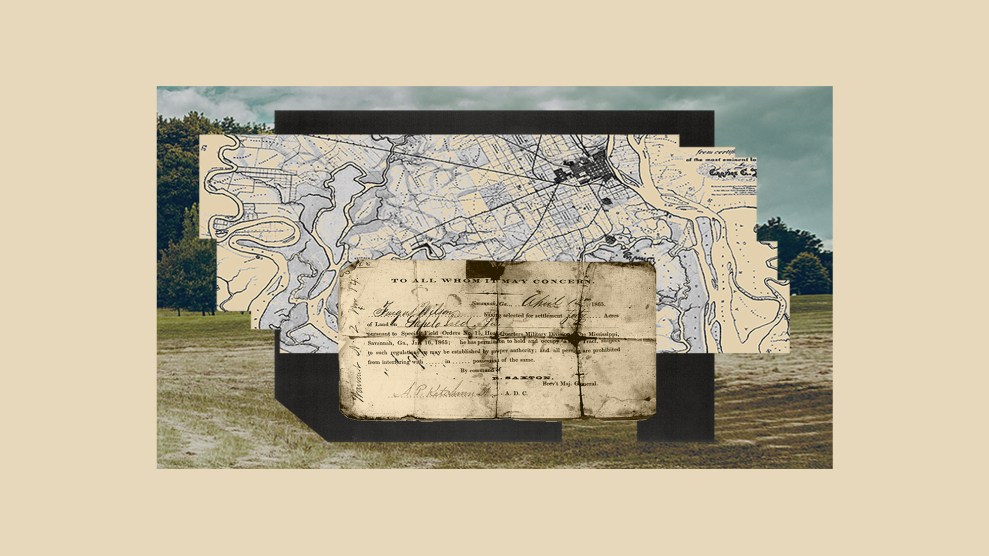This story was produced in partnership with The Trace and CBS News and Stations.
Candace Leslie was leaving church when she got the call she will never forget.
“All I heard was his girlfriend yelling in the phone, and she was like, ‘Cameron! Cameron! … He won’t get up. He won’t get up!’ ”
Someone shot Leslie’s son four times that Sunday evening in September 2021 outside his new apartment on Indianapolis’ northeast side.
Cameron Brown was 19. He was working at FedEx. He loved fishing with his grandfather and was trying to follow his footsteps into the U.S. Army.
Brown died at the scene.
“I just felt numb. I felt kind of disoriented,” Leslie said, remembering the chaos, the yellow police tape and officers scouring the scene.
Police recovered at least one gun. It was a Glock pistol. Unbeknownst to investigators at the time, the gun once served as a law enforcement duty weapon, carried by a sheriff’s deputy more than 2,000 miles away in California.
According to data from the Bureau of Alcohol, Tobacco, Firearms and Explosives, the Glock was one of at least 52,529 police guns that have turned up at crime scenes since 2006, the earliest year provided. While that tally includes guns lost by or stolen from police, many of the firearms were released back into the market by the very law enforcement agencies sworn to protect the public.
Reveal, from the Center for Investigative Reporting, in partnership with The Trace and CBS News, reviewed records from hundreds of law enforcement agencies across the United States and found that many had routinely resold or traded in their used duty weapons – a practice that has sent thousands of guns into the hands of criminals.
Law enforcement resold guns to firearms dealers for discounts on new equipment and, in some cases, directly to their own officers, records show. Some of the guns were later involved in shootings, domestic violence incidents and other violent crimes.
A Kentucky State Police pistol sold to a retiring detective ended up in Buffalo, New York, where federal agents executing a search warrant on a suspect in a murder investigation in 2019 found the gun in a backpack alongside heroin and a bulletproof vest. In another case in Indianapolis in 2021, police seized a former Iowa State Patrol pistol from a man while arresting him for allegedly choking a woman. The gun was fully loaded with a round in the chamber.
Reporters surveyed state and local law enforcement agencies and found that at least 145 of them had resold guns on at least one occasion between 2006 and 2024. That’s about 90% of the more than 160 agencies that responded.
Records from 67 agencies showed they had collectively resold more than 87,000 firearms over the past two decades. That figure is likely a significant undercount, however, because many agencies’ records were incomplete or heavily redacted.
Scot Thomasson, a former ATF division chief who is now a consultant for SafeGunLock, a Washington, D.C.-based company, believes police departments that resell weapons are violating their obligation to protect the public. “Taxpayers are buying firearms that are then resold for pennies on the dollar and ultimately ending up in criminals’ hands,” Thomasson said. “It is absolutely ridiculous.”
Many police departments resold their weapons while holding buyback events, which they say are important to pull guns off the street.
The Philadelphia City Council boasts on its website of having collected 825 guns in buybacks since 2021. But records show that Philadelphia police resold at least 886 guns over the past two decades, including 85 firearms between 2021 and 2022.
In some cases, departments added more guns to the marketplace than they removed.
The Newark Police Department in New Jersey staged a buyback in 2021, offering the public up to $250 for each firearm turned over. The event netted 146 guns. “Without question, 146 fewer firearms on our streets means less gun violence, fewer gun violence victims, and less risk of suicide or death,” the city’s public safety director said in a YouTube post celebrating the haul.
But five years earlier, Newark police resold more than five times that number of guns – nearly 1,000. One of those weapons surfaced in Pittsburgh, where police seized it from a convicted felon after he allegedly squeezed off more than a dozen shots in a neighborhood and then led officers on a foot chase.
A Newark police spokesperson said that the guns had been traded in as a cost-saving measure under a previous administration and that the department currently “has no plans to upgrade its service weapons.”
The Glock pistol involved in the killing of Cameron Brown in Indianapolis was one of more than 600 guns resold by the Stanislaus County Sheriff’s Office in Modesto, California, between March 2019 and August 2023, records show. Another weapon from the same agency found its way to Texas, where San Antonio police recovered it in connection with the shooting of a 15-year-old in 2020.
In an interview with CBS News, Stanislaus County Sheriff Jeff Dirkse defended the practice of reselling weapons as necessary to reduce the cost of new equipment. “You’re talking several hundred thousand dollars every few years, and that’s all taxpayer money,” he said. “It’s just a cost benefit to the department.”
Dirkse expressed sympathy to Brown’s family but said his agency was not responsible for the teenager’s killing. “Whoever did this, if he didn’t acquire that gun, he’s probably going to go acquire another one,” Dirkse said. “My organization had nothing to do with it.”
When a reporter told Brown’s family members that the gun involved in his death once belonged to a sheriff’s office, they were at first in disbelief and then angry.
“One more gun on the street actually changed our lives forever,” said Brown’s grandmother, Maria Leslie, a pastor. “We’re missing a piece of our puzzle.”
Now the family wants police to stop selling their weapons.
“I’m losing trust in the people who’re supposed to protect and serve us,” said Leslie, Brown’s mother. “There’s no reason for police firearms to be in the hands of young teenagers.”
Indianapolis Police Chief Christopher Bailey told CBS News that his agency has historically traded in its weapons, but he would consider changing that policy in light of Brown’s death. “I don’t want any weapon that we owned to end up being used violently against another person,” he said.
Brown’s killing remains unsolved.
A Rift in Law Enforcement
For decades, the ATF has worked on behalf of state and local law enforcement to trace recovered crime guns to their original owners, providing fresh leads to investigators and insights into firearms trafficking.
ATF data obtained by Reveal shows that between 2006 and 2021, the number of crime guns traced to law enforcement agencies each year more than doubled, from about 2,200 to more than 4,500. On average, more than 3,200 duty weapons were recovered at crime scenes annually over that 16-year period.
Records detailing some of the traces conducted between 2013 and 2017 indicate that the guns previously belonged to more than 800 different agencies, ranging from rural sheriff’s offices to police departments in the country’s largest cities.
Even more granular trace information used to be publicly available, making it easier for reporters to hold police accountable for their resale practices. The Washington Post in 1999 analyzed ATF data and identified 107 crimes linked to former District of Columbia police guns. That same year, a similar investigation by CBS News revealed more than 3,000 police guns had been connected to crimes – including nearly 300 homicides – since 1990.
The Tiahrt Amendment, passed by Congress in 2003 and named after the lawmaker who introduced it, now bars the ATF from disclosing most trace information to the public. In 2017, Reveal sued the ATF for refusing to respond to a public records request for statistical data on recovered police guns. The agency pushed back, citing Tiahrt. The Ninth Circuit Court of Appeals decided in favor of Reveal in 2020, ruling that the request fit within an exception to Tiahrt that allows the ATF to release statistical information.
Federal law enforcement agencies are legally required to destroy their used guns, but there’s no similar mandate for state and local agencies. As a result, decisions about what to do with old guns are left up to state and local leaders and police chiefs, who’ve taken a variety of stances.
Public safety concerns prompted Seattle police to stop trading in handguns around 2016. “If we’re selling them out, we just don’t know where those guns could end up,” said Seattle Police Chief Adrian Diaz. “We don’t want to contribute to the problem.”
When CBS News Minnesota showed our findings to Minneapolis Police Chief Brian O’Hara, he said his agency would stop reselling its guns.
“I don’t want us to be in a position where a weapon that was once in service for the police department here is then winding up used in a crime, or in an act of violence against a person, or even to shoot a police officer,” O’Hara said. “So going forward, we’re not going to be selling any weapons at all.”
Law enforcement agencies often trade their used weapons to a gun dealer for credit toward their next purchase, similar to how cellphone companies offer discounts on new phones in exchange for previous models.
William Brooks, a board member for the International Association of Chiefs of Police, said resales are essential for many departments to afford weapons upgrades. “Decisions about trading in old police service weapons should be left to individual communities and their police chiefs,” he said. “We believe that, should a community decide to destroy old weapons when new ones are purchased, they should commit just as fervently to fully funding new firearm purchases when their police chiefs call for them.”
Once sold by a department, weapons enter a secondary market where they can be resold to members of the public or other dealers. By the time they turn up at crime scenes, the guns may have been stolen, traded or resold multiple times with little documentation. They sometimes still have the department’s name stamped on the side.
Michael Sierra-Arévalo, a sociologist at the University of Texas at Austin and author of “The Danger Imperative: Violence, Death, and the Soul of Policing,” said trade-ins allow police to avoid public scrutiny, as they can purchase new guns without having to obtain budgetary approval from city leaders.
“There are certainly other mechanisms to acquire weapons. You can get a line item in the budget with the city, but that could come with all kinds of political hurdles to jump through,” Sierra-Arévalo said. “So I’m not surprised that when someone shows up and says they can help the police skip all of that, the police go with that.”
The Baltimore Police Department weathered public criticism in 2008 after one of its traded-in service weapons was used to kill two children as they walked home from a slumber party in Oklahoma.
At a news conference in April, Baltimore Mayor Brandon Scott said officers are given the opportunity to purchase their duty weapons for personal use before the guns are traded in for credit. If an officer buys a gun and wants to resell it later on, they must first offer it back to the department.
“We know that there are some issues around the country,” Scott said. “For BPD, we’re extremely diligent about what happens when we have weapons retire.”
The police department for Baltimore County – which is separate from the Baltimore city police department – takes a different approach. In 2013, it traded in its old guns to a firearms dealer, but under the terms of the agreement, key parts of the guns were destroyed, a spokesperson said.
“I felt throughout my entire career that police departments should not be in the business of putting more guns back out into our society,” said James Johnson, who served as Baltimore County police chief from 2007 to 2017.
In 2023, the Los Angeles County Board of Supervisors unanimously approved a requirement that the Sheriff’s Department destroy firearms it no longer needed. Board Supervisor Janice Hahn said she hopes the decision can serve as a model for the rest of the country. “Those of us at the local level should do what we can to keep guns out of the hands of criminals,” she said. “We all can wait all day long for Congress to pass common-sense gun violence prevention laws.”
Some police departments argued that because they were reselling to gun stores and other federally licensed gun dealers, they were not technically purveying firearms directly to members of the public.
In an email, a spokesperson for the Fort Worth Police Department, Buddy Calzada, said it would be “inaccurate” to report that the agency resells guns to the public.
He then went on to explain how the department resells guns: “In rare cases, the department has traded small quantities of firearms back to the dealer the department purchased them from and received credit for newer weapons,” Calazada wrote. “It is important to note, any guns sold by a dealer are sold only to qualified buyers who have passed the Federal background checks.”
Internal records show that the department resold more than 1,000 guns to two dealers in the past 10 years. The department declined an interview request.
Appealing to Gun Buyers
Using sales records obtained by CBS News from dozens of police departments, reporters identified nearly 50 gun dealers whose business includes buying and reselling retired police weapons. Many are self-styled police-supply companies that also sell flashlights, handcuffs and other tools of the law enforcement trade.
Police-supply companies that buy and sell firearms have to hold a federal gun dealer’s license, which allows them to sell guns to members of the public. The license opens them up to inspections by the ATF, but internal records show that the agency has long been toothless and conciliatory, mostly issuing warnings instead of serious punishment when its inspectors find dealers breaking the law.
To encourage better practices among suppliers competing for lucrative public contracts, some California cities have passed measures to prevent local law enforcement from doing business with gun dealers that have been cited for serious violations during inspections. But in most of the country, there is no requirement for law enforcement to consider a dealer’s compliance history when awarding contracts.
Lindsay Nichols, policy director at the Giffords Law Center to Prevent Gun Violence, said police have a moral and ethical responsibility to do business only with gun dealers that follow best practices. “There are plenty of conditions that an agency could put on a gun store as a condition of receiving their weapons,” she said. “There are lots of gun stores out there. You don’t have to sell to any one particular business.”
ATF inspection records show that one of the most prolific buyers of used police guns has a long history of violating federal regulations.
LC Action Police Supply, based in San Jose, California, bought more than 3,000 guns from 11 different law enforcement agencies between 2005 and 2023, including the gun involved in Cameron Brown’s homicide, according to records obtained by CBS News.
Over that same period, the ATF cited LC Action for 30 violations of federal firearms laws, including failing to conduct background checks and report suspicious gun sales, records show. One ATF inspector pushed for revoking LC Action’s license to sell guns after the company was cited for six violations in 2005, but the recommendation was overruled by agency higher-ups.
The ATF inspected LC Action four more times between 2009 and 2019, uncovering many of the same violations. The agency allowed the company to keep its license to sell firearms.
LC Action did not respond to multiple requests for comment via phone and email. When a reporter and a photographer from CBS News Los Angeles visited the company’s retail store and asked to speak with a representative, they were told to leave.
An ATF spokesperson said the agency does not comment on specific cases, but as a general matter, the outcome of any licensing action involving a gun dealer is dependent on the underlying facts and circumstances. The spokesperson added that the ATF’s policies and procedures were designed to maximize public safety by ensuring federal law is fairly and consistently administered.
In 2021, the Biden administration ordered the ATF to implement a zero-tolerance policy on lawbreaking gun dealers, a step that has led to an increase in license revocations.
Used police guns are popular among gun buyers because they’re relatively inexpensive and often in good condition. They also typically have high ammunition capacities and are designed to hold large- to medium-caliber rounds.
Larry Brown Jr., a firearms instructor and president of the Bass Reeves Gun Club in Atlanta, said he bought a used police gun because it was already equipped with glow-in-the-dark sights and a special trigger that made it easier to shoot, saving him money on upgrades.
“The price is on point,” Brown said. “Police trade-ins are typically better equipped and better souped-up than what I would buy new. That’s what made me buy the one I have.”
The demand for decommissioned police weapons has created a thriving market, with gun dealers snapping them up en masse.
“Every now and then, I’ll get a call from my reps saying, ‘Hey, we got a bunch of police Glock 22 trade-ins for a great price. They’re all in good shape if you’re interested,’ ” said Mark Major, the owner of 2-Swords Tactical & Defense, a gun dealer in Lithonia, Georgia. “Usually, police trade-ins are kept up by the armorer in the department. They do have some scratches and rubs on them from being in a holster, but they work.”
Online forums and blogs promoting the benefits of used police guns are common, and there are dozens of YouTube videos featuring gun dealers and enthusiasts showing off large shipments of the weapons to entice potential buyers.
In a video posted last month by AimSurplus, a gun dealer in Monroe, Ohio, one of the store’s employees shows off a rolling cart piled high with assault weapons, as well as several boxes of pistols and shotguns – all former police guns to be resold on its website.
“You guys love our police trade-ins,” the employee says. “And why shouldn’t you? They’re awesome. We just got a whole truckload in.”

